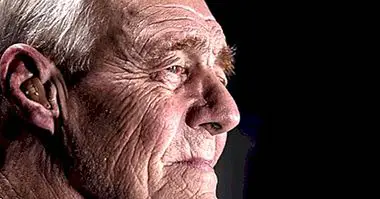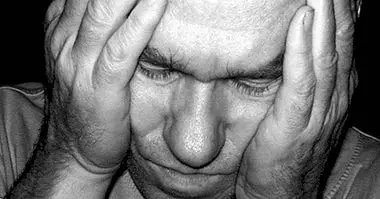A cause of Bipolar Disorder is discovered thanks to lithium
Even though bipolar disorder affects between 1% and 3% of the population , the great variability of its possible causes means that its nature remains relatively unknown. Something similar happened until recently with lithium, the drug of choice in the treatment of this disorder, which has been used for decades without knowing its mechanism of action.
A study by Evan Snyder, Brian Tobe and other authors recently published in the journal Proceedings of the National Academy of Sciences has provided fundamental keys on the mechanism of action of lithium and the cause of cases of bipolar disorder that improve with this drug. In particular, they have detected alterations in the CRMP2 protein.
- Related article: "Bipolar disorder: 10 features and curiosities you did not know"
Characteristics of Bipolar Disorder
Bipolar disorder is characterized by the appearance of periods between weeks and months in which the mood is pathologically low (depression), along with others in which energy levels increase significantly and A feeling of emotional euphoria (mania) predominates .
Both episodes of mania and those of depression interfere significantly with the normal functioning of the person; In fact, this disorder is the sixth most common cause of disability in the world population.
Specifically, the diagnosis of bipolar disorder is associated with a marked increase in the risk of suicide and self-harm . This is one of the reasons why it is customary to treat with potent medications; if these do not work, electroconvulsive therapy may even be applied.
- Maybe you're interested: "Types of Bipolar Disorder and its characteristics"
The causes of this disorder
The onset of bipolar disorder has been linked to a large number of different causes. It is believed that the genetic inheritance explains 70% of the risk of developing this alteration , approximately.
However, the specific causal genes are not clear, since they seem to vary depending on the case; the dominant hypothesis defends that there are multiple genes involved.
In addition, the finding of structural and functional alterations in regions such as the lateral ventricles, the basal ganglia and the amygdala suggests that anatomical and physiological factors also play a relevant causal role.
On the other hand, not all people with biological predisposition to bipolar disorder develop it. For this to happen it is usually necessary for psychosocial stress to occur , especially during the early stages of life; striking is the fact that 30-50% of affected people report having suffered abuse or traumas in childhood.
What is lithium?
Lithium is a chemical element of the metals family. It is the solid element, and therefore also the metal, lightest of all. At the pharmacological level, Lithium salts are used to regulate mood in the treatment of bipolar disorder and other similar psychological problems, such as schizoaffective disorder or cyclic depression.
Among other effects, lithium decreases the risk of suicide of people with these disorders. Although it is the drug of choice for treating bipolar disorder, lithium is only effective in about one third of affected people.
In addition, given that the therapeutic dose is very close to the toxic dose, lithium carries risks and causes secondary symptoms and relevant adverse reactions, such as emotional dullness, weight gain, muscle tremors, nausea or the appearance of diabetes insipidus and hypothyroidism.
Lithium began to be used as a psychopharmaceutical about 60 years ago. While its effectiveness in treating the symptoms of bipolar disorder (As we have seen, in a third of the cases) it has been amply demonstrated at this time, until very recently the cause of these effects, that is, its mechanism of action, was not known.
- Related article: "Types of psychotropic drugs: uses and side effects"
The mechanism of action of lithium
The research team headed by Evan Snyder analyzed the brain cells of people with bipolar disorder distinguishing between those that responded well to lithium and those that did not. Specifically, they used artificial stem cells to study the path of lithium once it has been introduced into the body.
Snyder and his colleagues found that in cases of bipolar disorder that benefit from lithium treatment is involved the CRMP2 protein, which regulates the central nervous system . Apparently the activity of CRMP2 is altered, since it is much lower in these patients than in those who do not respond adequately to lithium.
This finding indicates that there are different variants of bipolar disorder, which reinforces the dominant theory that states that it is a polygenic disorder (that is, not determined by a single gene).
The discovery of the mechanism of action of lithium can favor the development of more effective drugs and with fewer side effects, since it allows to focus research efforts on the most relevant biological processes.
Likewise, the study by Snyder's team suggests that the identification of the causes of bipolar disorder in each specific case should be considered a determining factor in the choice of the most appropriate pharmacological treatment for the person.



















